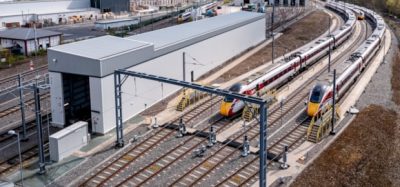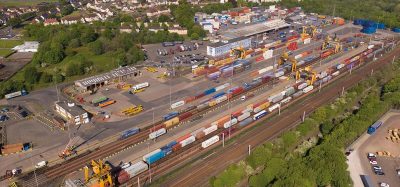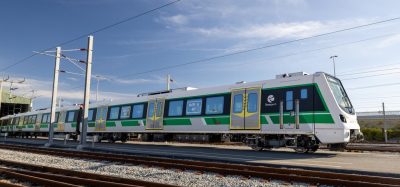Renfe faces the future with confidence
Posted: 26 September 2007 | | No comments yet
Completion of the first high-speed line in Spain 15 years ago gave Renfe a new confidence and investment in the network is continuing at a sustained pace. Spain has one of the fastest–growing railway networks in Europe. Renfe (Spanish National Railways) gained a new confidence with the opening of the first high-speed line in the country in 1992, and since then has gone from strength to strength. Not only is the high-speed network growing faster than anywhere else in Europe, but the railway has also modernised its commuter and regional networks.
Completion of the first high-speed line in Spain 15 years ago gave Renfe a new confidence and investment in the network is continuing at a sustained pace. Spain has one of the fastest–growing railway networks in Europe. Renfe (Spanish National Railways) gained a new confidence with the opening of the first high-speed line in the country in 1992, and since then has gone from strength to strength. Not only is the high-speed network growing faster than anywhere else in Europe, but the railway has also modernised its commuter and regional networks.
Completion of the first high-speed line in Spain 15 years ago gave Renfe a new confidence and investment in the network is continuing at a sustained pace.
Spain has one of the fastest–growing railway networks in Europe. Renfe (Spanish National Railways) gained a new confidence with the opening of the first high-speed line in the country in 1992, and since then has gone from strength to strength. Not only is the high-speed network growing faster than anywhere else in Europe, but the railway has also modernised its commuter and regional networks.
Work began in 1986 on the 471km Madrid–Seville high-speed line. Seville might seem a curious choice of destination for the country’s first high-speed line: a more obvious choice might have been a route linking the capital with the second-largest city, Barcelona. But the historic route to Seville through the mountains was a serious bottleneck on the network, and the World Expo planned for the city in 1992 gave the government a goal to work towards.
Setting the opening date just six years away from the start of the project implied a breathtakingly fast construction time – but this feat was achieved, with the route opening on 21 April 1992, in time for the Expo.
Built to 1,435mm standard gauge, as opposed to the 1,668mm broad gauge common to the rest of the Iberian network, the new route ushered in a new set of standards.
The route used a mixture of French and German technology, with for example a German company responsible for the 25kV electrification. But the most striking feature of the new route, the new Alta Velocidad Española (AVE) high-speed trains, were based on the French Trains à Grande Vitesse.
The Spanish struck a canny deal with the French that resulted in a large part of the Spanish railway vehicle construction industry modernised. In return for the contract for the AVEs, the predecessor company of TGV manufacturer Alstom agreed to take on some run-down factories and upgrade them for the production of AVE vehicles. This catapulted Spain into the top rank of rolling stock production centres in Europe, with the Alstom factory in Barcelona now building trains for export; for example, it recently supplied new trains for London Underground’s Jubilee Line.
Building confidence
The new high-speed line from Madrid to Seville was an immediate success, carrying not only crowds to the Expo but establishing rail as the mode of choice between the two cities. Before the line was built, cars accounted for about two thirds of the travel between Madrid and Seville and aeroplane 11%, but since it was opened, car’s share has shrunk to one third and air is down to 4%.
Rail’s share has gone up accordingly. By 2006, over 80 million passengers had been carried by the various train services using the line, with roughly half — just over 41 million — using the AVE services. The figure for the high-speed trains in 2006 was 3.7 million, which was up 7.5% on the previous year. As well as AVEs, the Madrid-Seville line is also used by locomotive-hauled trains; these use gauge-changing devices to reach destinations on the historic network away from the high-speed line.
The AVE service has a superb operating record: punctuality last year was 99.6%. Renfe is so confident of the reliability of its product that it offers a 100% money back guarantee on the Seville route if a train is more than five minutes late. Less than 0.25% of ticket revenues have had to be returned as a result of this policy. The money back deal only applies to the Seville line at present, but Renfe intends to apply it on the more recent high-speed routes in due course.
The success of the Madrid-Seville line was important not only in financial terms, but also as a confidence-building measure. It established Renfe as a forward-looking railway corporation in the eyes of both passengers and the government, and has contributed in large measure to subsequent decisions to spend large sums on expanding the high-speed network and modernising the Madrid commuter system.
Record-breaking trains
The years since the first AVE route opened in 1992 have seen heavy investment in new rolling stock, to cater for both the growing high-speed network and the historic 1,688-mm gauge system.
Recently entered into service are the Velaro E high-speed trains from Siemens of Germany, which have broken the Spanish rail speed record. An unmodified trainset has reached a speed of 403.7km/h, which Siemens says makes it the fastest series-production high-speed train in the world.
Towards the end of June 2007, Spain’s regulatory authorities and Renfe approved the Velaro E for service, and the trains began to work on the Madrid–Seville and Madrid–Tarragona lines on 22 June. The installed power is 8.8 MW, to give a normal maximum speed in service of 350km/h – well in excess of the 300km/h commonly seen on high-speed routes in other European countries.
The Velaro E, which is based on the ICE3 in use in Germany, is known as the AVE S 103 in Spain. It has been adapted to fit Spanish conditions with three classes of accommodation: Club, Preferente and Turista. At the front of the train there is a Club Class car with a conference room and a VIP room, as well as its own galley. The adjacent Preferente Class offers high-quality furnishings and individual service on what is termed a business-class level.
The transition to the Turista (tourist) Class is through the cafeteria car, in which there are rooms for the customer support service, the train personnel, and unaccompanied luggage. Nearly all the seats rotate and can thus be turned to face in the direction of travel before the journey begins. Large video displays in all cars offer a variety of entertainment programmes, and there are six different audio programmes for at-seat entertainment. Internal and external LED (light emitting diode) displays supply passengers with information in several different languages.
With a length of 200 metres, the AVE S 103 has space for 404 passengers. The train is fitted with European Train Control System Level 2.
S-102s
Another recent design of high speed train is the AVE S-102. Renfe ordered 16 of these trains in 2001, from a consortium of Patentes Talgo and Bombardier: these are now in service on the Madrid-Lleida and Madrid-Huesca lines. At the end of 2005 Renfe added to the order, bringing the total number of S-102s ordered to 46 – representing an investment of almost €1 billion.
Thanks to extensive wind tunnel testing, the AVE S-102’s special design decreases the pressure waves that occur when a train passes through tunnels and significantly reduces the effect of crosswinds. The S-102 is designed for a maximum speed of 330km/h.
Assembly of the coaches is taking place at Talgo’s workshop at Las Matas, while the power cars are being built at Bombardier’s site in Kassel (Germany) and at Renfe’s workshop in Málaga (Spain). The coupling of the complete trains takes place in Talgo’s Las Matas plant and at Renfe’s Malaga site.
Suburban trains too
While the orders for high-speed trains catch the headlines, Renfe has also been investing in new suburban trains. For example, there has been an ongoing construction programme for the Civia design of suburban electric multiple-unit, first developed in 2002, for which CAF is principal contractor and Siemens supplies the propulsion equipment. Featuring an aluminium alloy construction and articulation, the unit is supplied in lengths of two to five cars.
Renfe has also ordered regional trains from CAF, with a big contract placed last year. This order includes 50 Iberian-gauge three-car diesel trains (150 cars), with pre-installation for variable-gauge bogies; 23 Iberian-gauge five-car electric trains (115 cars); 34 Iberian-gauge five-car electric trains (170 cars), with pre-installation for variable-gauge bogies. The total is 107 trains and 435 cars, with a value of €590 million. On top of this CAF was given a contract for 14 years’ maintenance, worth a billion Euros. The new stock will be supplied between 2008 and 2011.
Competition for freight
In accordance with European Union directives, Spain’s railways have been opened up to new freight operators. A number of new entrants have emerged, including the construction concerns Acciona and ACS and the logistics company Transfesa – the latter having just been acquired by Railion, the freight arm of Deutsche Bahn of Germany.
However, the lion’s share of freight traffic in Spain is still in the hands of the state operator Renfe. The company has taken action to modernise its freight traction fleet, having ordered 100 Traxx locomotives from Bombardier last year for delivery from 2008 to 2010. The 140km/h locomotives are designed to work off the 3kV DC supply in Spain, and feature Bombardier’s well-proven MITRAC propulsion and control technology.
These locomotives are being manufactured by Bombardier at Renfe’s site in Villaverde, near Madrid. Propulsion systems are being made by Bombardier in Spain at its Trapaga facility, Biscay.







